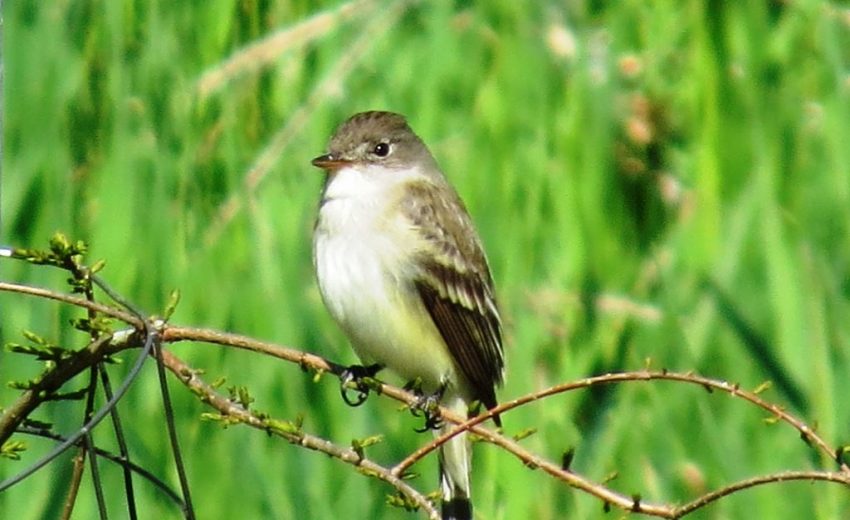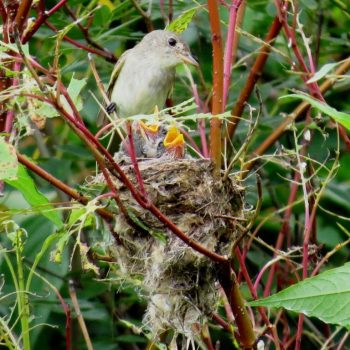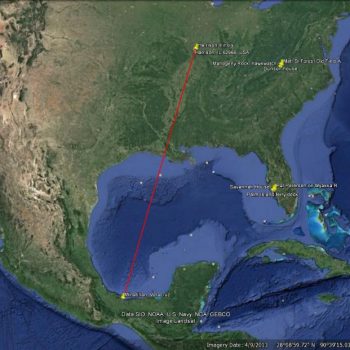
- A willow flycatcher in our VA yard
- A willow flycatcher feeding babies in our yard
- The flight track of a willow flycatcher banded in Illinois and recaptured in Veracruz Mexico two days later
We have perhaps four pairs of willow flycatchers breeding near our house in VA and recently were able to document two nests in red twigged dogwoods. This constitutes a new record for late summer breeding for VA and allowed us to get some additional insight into the breeding habits of this uncommon flycatcher. Our last indication of willows in the area was approximately the end of August. The second nest fledged about Aug. 20. So we were very interested in the report below about a willow flycatcher banded in Harrison, Illinois, Aug. 30, being recaptured in Minatitlan, Veracruz, Mexico two days later. We do not have the exact times of capture nor do we know the flight track taken by this migrating flycatcher. But assuming a 48 hour flight directly from Illinois to Veracruz crossing the Gulf of Mexico this yields a distance of about 1378 miles with an average flight speed of about 29 mph!!! For such a tiny bird this is simply a remarkable feat of endurance, even if it were lucky enough to get a tail wind to reduce its energy expenditure from flying. This is an another example of how little we know about the amazing migratory feats of birds which travel twice a year from South to North America.
Bill Dunson
http://lemonbayconservancy.org/news-blog/nature-notes-by-bill-dunson/
>” We always speak about amazing migration achievements in Shorebirds. Here I > want to show you something amazing. You know Willow Flycatcher (Empidonax
> traillii), these little guys can fly from North America to northern South > America during migration. they weight 14 to15 grs. and they cross through
> where we are, in Minatitlan Veracruz. Yesterday we caught around 120 of > them, and one was already banded. We checked out, thanks to BBL, found
> this bird was banded in Harrison Illinois, USA on the 30th of August 2014. > We recaptured it yesterday 1st of september 2014, two days later 2200 km
> away. That means this bird flew about 45 km/hour for 48 hours non stop. > That’s an achievement. > If somebody has the email of Lee G Johnson, He is the happy bander…I
> would like to enter in contact with him.”
>> All the best
> Manuel Grosselet www.tierradeaves.com



